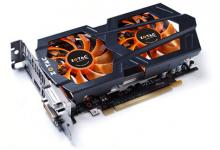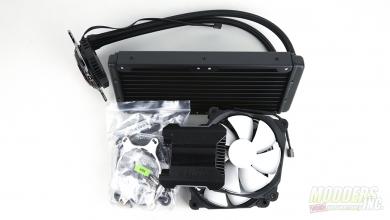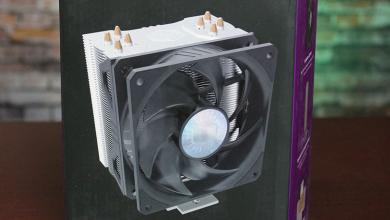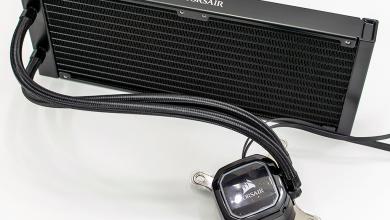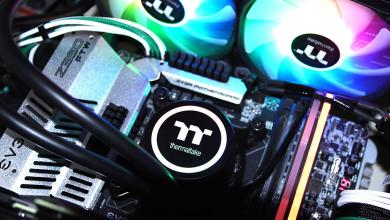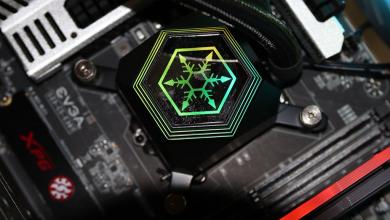Noctua NH-C14 CPU Cooler
Performance… and how!
| Ok, so here is what I did. Using the stock cooler, I overclocked the CPU as far as I could. And when it became unstable per the Intel testing tool, I swapped to the Noctua to see if lowering the residual thermals on the CPU would help stabilize the overclock. I’m using an i7 950 CPU as the guinea pig. All of the pics below have been compressed. Click the image to see the full resolution desktop capture.
With the CPU at stock, using the stock heat sink unit: 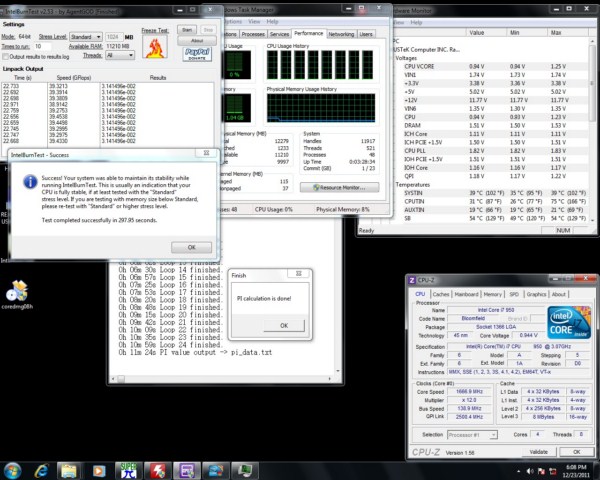 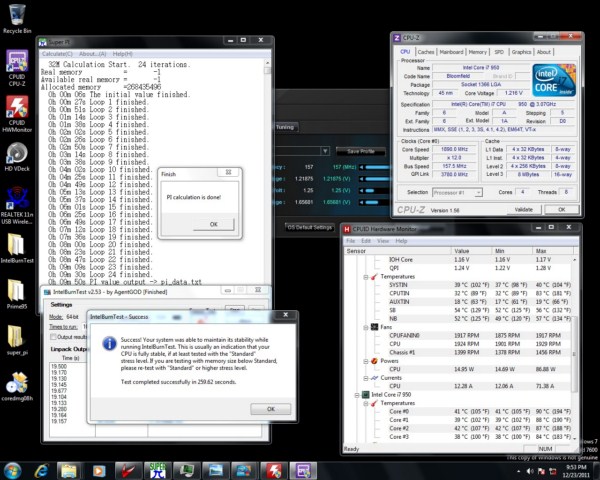 So, I bumped it up some more, took it to 3852 and re-ran the Intel BurnIn test tool again, and noted no change in the thermals. 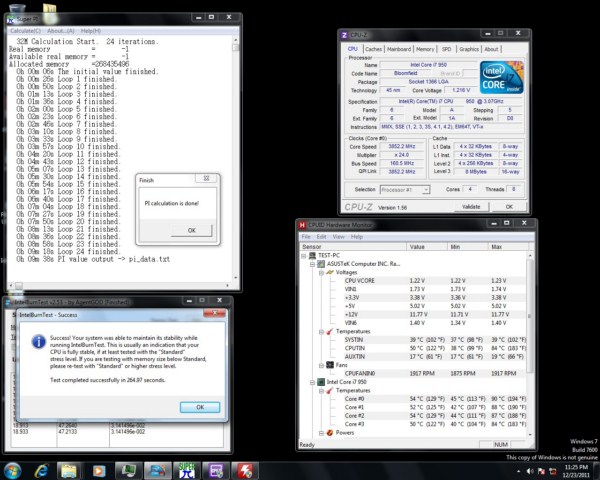
So I bumped up again to 4032MHz. 99/96/98/92 degrees C, and the Intel BurnIn test said, “Not so fast, this ain’t stable.” Note the warning window in the lower right side of the screen shot. SuperPI keeps dropping faster and faster… but I just hit a warning.
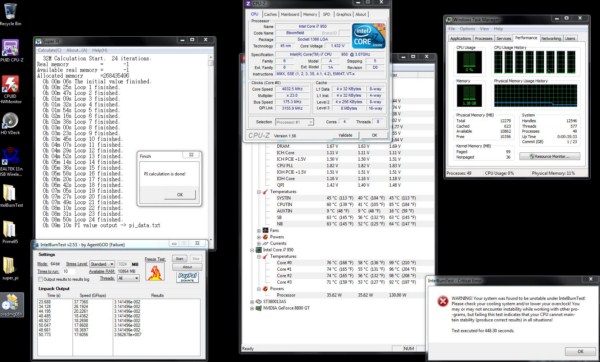
So I let everything cool off, then shut down and replace the stock unit with the Noctua NH-C14, left the settings all the same and reran the test using the new heatsink. Same settings, 99/95/92/91 C and a stable pass from the Intel BurnIn utility. Only thing changed was the heatsink. Using the included TIM (NT-H1) from Noctua, there is no “cure time”. It just works!
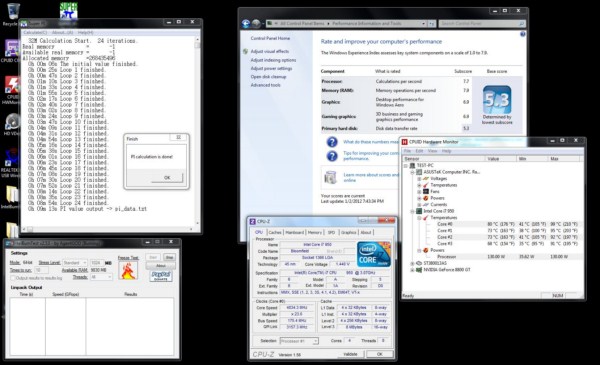 Could your heatsink be holding you back from a successful overclock, and can the NH-C14 potentially stabilize that which would overwhelm a lesser heatsink? Categorically, I would say, “yes!” The Intel BurnIn test tool is developed by Intel engineers and puts a theoretically super high utilization on the CPU using all the aspects of the CPU. It is not likely that a CPU would see the kind of loads that the tool generates in normal, high performance computing, so it is a good tool to test with thermal loading and stability. |
